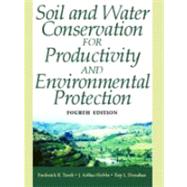
| Preface | |
| Conserving Soil and Water | p. 1 |
| Soil Erosion and Civilization | p. 20 |
| Geologic Erosion and Sedimentation | p. 46 |
| Water Erosion and Sedimentation | p. 73 |
| Wind Erosion and Deposition | p. 100 |
| Predicting Soil Loss | p. 129 |
| Soil Surveys as a Basis for Land Use Planning | p. 179 |
| Cropping Systems | p. 206 |
| Tillage Practices for Conservation | p. 242 |
| Conservation Structures | p. 282 |
| Vegetating Drastically Disturbed Areas | p. 315 |
| Pastureland, Rangeland, and Forestland Management | p. 350 |
| Water Conservation | p. 376 |
| Soil Drainage | p. 411 |
| Irrigation and Reclamation | p. 447 |
| Soil Pollution | p. 490 |
| Water Quality and Pollution | p. 532 |
| Economics of Soil and Water Conservation | p. 551 |
| Soil and Water Conservation Agencies in the United States | p. 574 |
| Soil and Water Conservation Around the World | p. 597 |
| Conservation Factors | p. 623 |
| Common and Scientific Names of Plants Mentioned in the Text | p. 627 |
| Index | p. 641 |
| Table of Contents provided by Blackwell. All Rights Reserved. |
The New copy of this book will include any supplemental materials advertised. Please check the title of the book to determine if it should include any access cards, study guides, lab manuals, CDs, etc.
The Used, Rental and eBook copies of this book are not guaranteed to include any supplemental materials. Typically, only the book itself is included. This is true even if the title states it includes any access cards, study guides, lab manuals, CDs, etc.